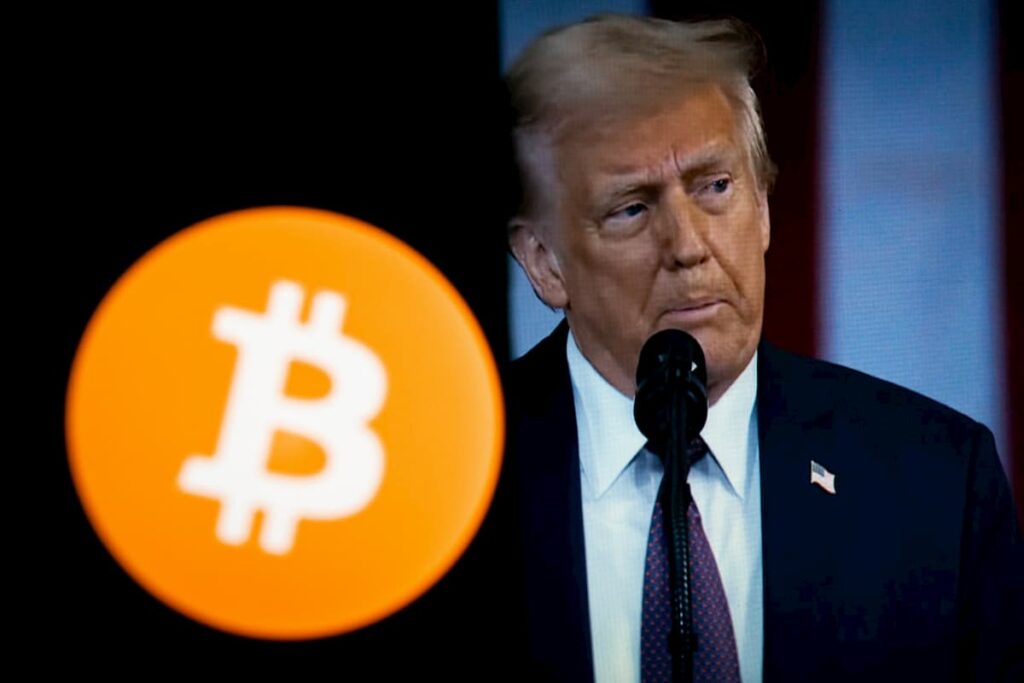In the dynamic world of cryptocurrency, market trends can swiftly change, influenced by a complex interplay of political events, global financial shifts, and advancements in blockchain technology. As digital assets become an increasingly integral part of modern investment portfolios, understanding these fluctuations is crucial for both seasoned investors and newcomers alike. The intersection of political landscapes, such as Donald Trump’s presidency, and economic policies has had significant impacts on the cryptocurrency sphere. Exploring these narratives provides insights into potential future trends and opportunities within the market.
The Impact of Political Shifts on Cryptocurrency Markets
The cryptocurrency market, known for its volatility and speculative nature, faced a challenging period during Donald Trump’s initial 100 days in office. Despite various positive regulatory changes, Trump’s tariff policies pushed investors away from speculative assets, including cryptocurrencies. According to data from Finbold sourced from CoinMarketCap, the market capitalization of cryptocurrencies was notably impacted during this time. On January 20, at the start of Trump’s second presidential term, the total market cap stood at $3.49 trillion. By April 29, marking the 100th day of his presidency, the figure had dwindled to $2.97 trillion, reflecting a substantial decrease of $520 billion.
However, recovery signs began to emerge as the market cap rebounded to $3.01 trillion by May 1, surpassing the psychological threshold of $3 trillion for the first time in nearly two months. This fluctuation highlights the sensitivity of the cryptocurrency market to macroeconomic factors and the varying investor sentiment in response to political changes.
Potential for Market Revival in Trump’s Ongoing Tenure
Despite initial setbacks, the latter part of Trump’s presidency could potentially herald a recovery for the cryptocurrency market. The earlier stages saw a dip to as low as $2.42 trillion in market capitalization, yet recent movements indicate a turnaround. The leading cryptocurrency, Bitcoin, is showing signs of decoupling from traditional equity markets and aligning more closely with commodities like gold. This shift could signal a new era of stability and growth for digital assets.
Notably, not all market challenges are attributed solely to external political factors. The rise and fall of various cryptocurrency projects, especially those centered around meme coins, also played a role. As investors pivot toward more stable and utility-driven projects, the market is likely to see a consolidation that favors robust and innovative blockchain solutions.
What is the long-term outlook for the cryptocurrency market?
The long-term outlook for the cryptocurrency market remains optimistic, driven by technological advancements and increasing institutional adoption. However, it is essential for investors to stay informed about regulatory developments and macroeconomic conditions that could influence market dynamics.
How do political events impact cryptocurrency prices?
Political events can significantly impact cryptocurrency prices by affecting investor confidence and market stability. Policies that influence economic conditions, such as tariffs or regulatory changes, can lead to shifts in market sentiment and capital allocation.
Is Bitcoin still a safe investment amidst market volatility?
While Bitcoin remains a popular investment due to its established network and potential for growth, its market volatility necessitates careful consideration. Investors should evaluate risk tolerance and market conditions before making investment decisions.
To navigate the ever-evolving cryptocurrency landscape, leveraging platforms like Finances Zippy can provide investors with real-time insights and expert analyses. By staying informed and proactive, investors can better position themselves to capitalize on emerging opportunities in this exciting digital frontier.

